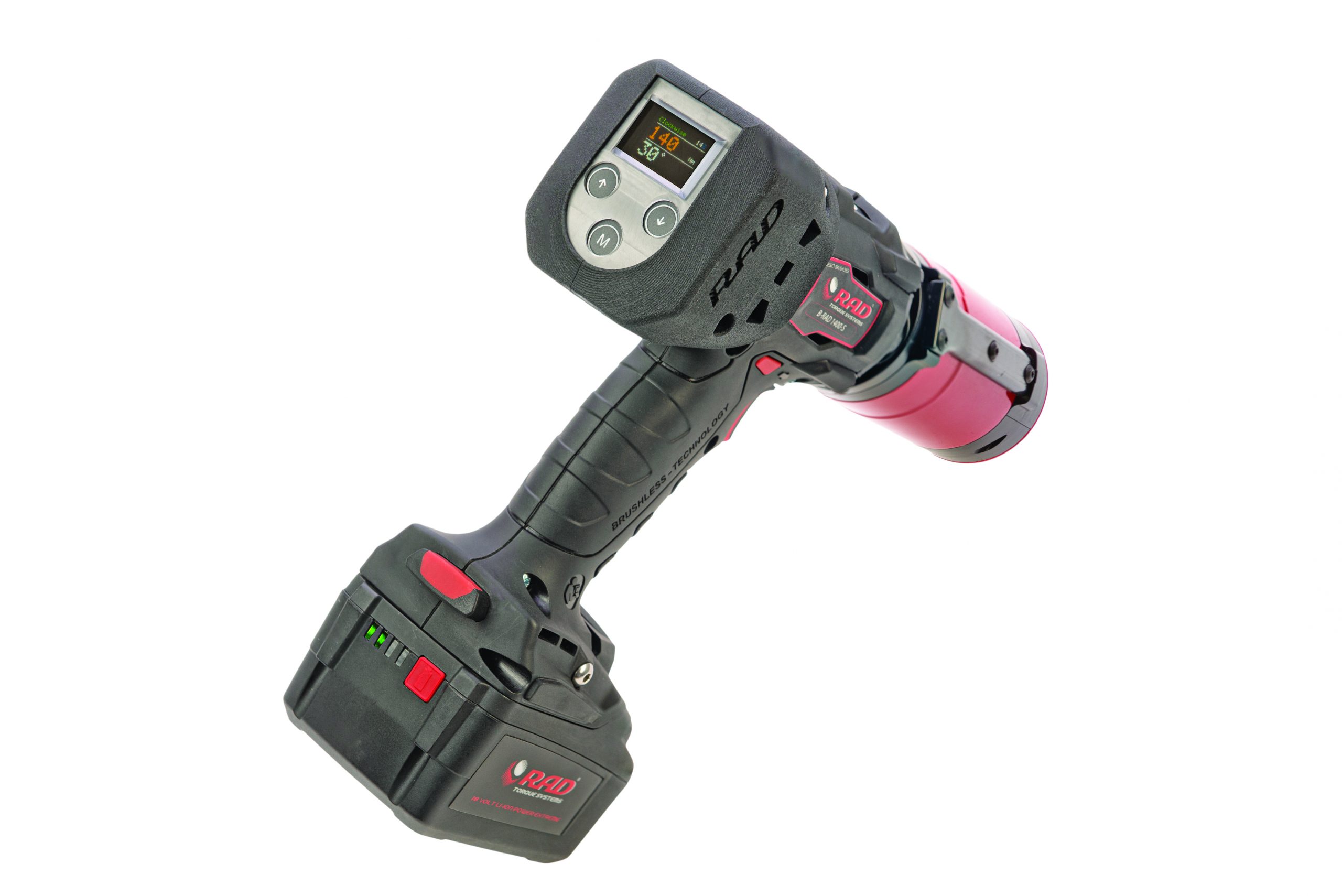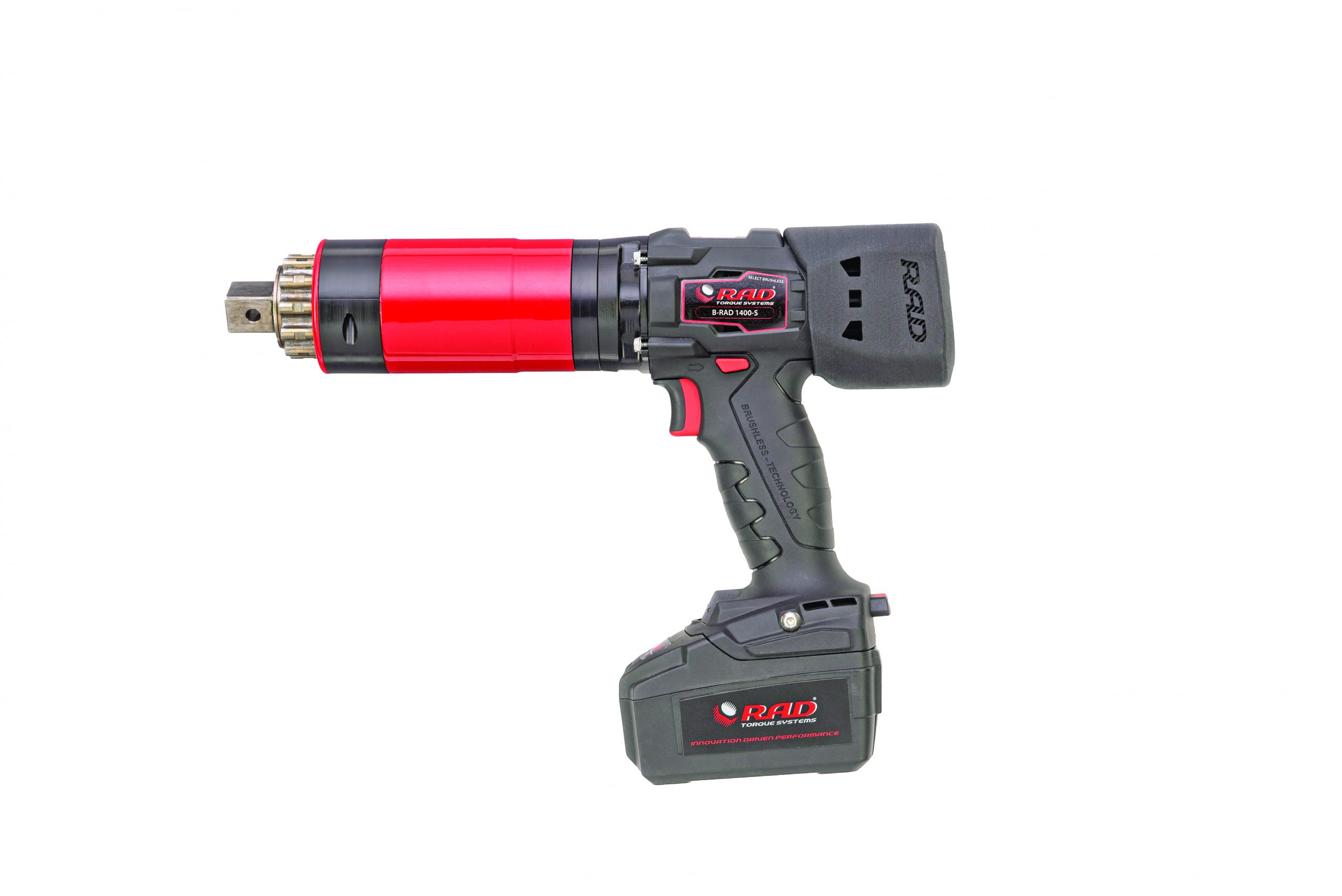What is your role with RAD Torque Systems?
I’ve been working with RAD Torque Systems for about eight years now, and I’m currently the Electronic Service Specialist.
I deal with all of the issues that come back if someone has a problem with our tool and they need help operating it. I inform them of what to do, or I repair tools that come back from our distributors.
Basically, I do customer problem-solving and make sure everything’s up to speed and people know what they’re doing when it comes to our products.
What is the B-RAD torque wrench, and what makes it beneficial to wind energy in particular?
The B-RAD Series is RAD Torque’s battery-powered torque wrench. We know when it comes to wind that going up and down the towers is a big thing, and the key reason why the B-RAD torque wrench helps is its portability.
You don’t have to be hauling hoses or cables or anything up with you; you simply bring the tool up-tower with a couple extra batteries, maybe the charger, and you’re good to go. You won’t be tired out, and you can do more bolts.
The batteries themselves are pretty high capacity and they charge quickly, so you won’t be slowed down when you do have to change them.
It’s as simple as just removing a battery, like you do any other power drill, and putting it back in. The B-RAD Series offers four different battery-powered tools including a digital option and offset.

What advantages does the B-RAD transducer system have compared to other tools?
Our newest torque wrench is the B-RAD BL S. What makes this tool special is the built-in transducer system, which allows you to check that the output torque of the tool is correct. With most other tools, you have your calibration values, and you run the tool, and that’s it. You’re like, yep, it’s good to its calibration. With the B-RAD BL S, you can actually check that the tool is outputting exactly what you need and can confirm that the torque is accurate to your job. The programming of the tool contains torque check and angle features.
Instead of just having torque values, you can torque it to degrees, or you can check pre-tightened bolts to see if it’s hitting correctly. If you do use a different tool and you use this tool specifically for just checking, it’ll say, yes, the bolt’s good, or no, you need to tighten it, and it’ll tighten it to that point.
When it comes to calibrating the tool, we recommend to get your tool calibrated every so often, around a year or so. And it’s easy to calibrate the sensor, the transducer, alongside the rest of the tool, like you would another electronic tool or even a pneumatic.
What makes the B-RAD Series’ datalogging capabilities unique?
It’s a very easy datalogger to use. You connect the tool with Bluetooth to your computer, and you can pull the information off with just a few steps. It allows you to put the name and more on all the logs, relatively simply.
At the end of the day, if you’re taking your information off the tool, you can name it for the day or name it for the job or name it for the operator.
It allows you to store the information and access it easily, so if you need to go back and check and do an audit on the bolts, you can see exactly what’s been done and when it’s been done.
What’s the difference between the B-RAD Series and the RAD Pneumatic Series Torque?
The B-RAD S allows you to pick your torque settings exactly. When you think about a tool, like an air tool, you have a calibration chart that says if you set the PSI to this, you’re going to get this amount of torque. With the B-RAD S, you can pick the torque exactly how you want it. How the electric tools are calibrated is the key difference between them. Because when they’re calibrated, you’re comparing motor percentages and letting the internal computer calculate that. This lets you pick your torque precisely.
Does this function take much of the “guess work” out of torque measurements?
Exactly. So, for example, say you have your torque chart on your pneumatic tool, and it says 95 PSI for this gives you 1,000 and 100 PSI gives you 1,050. If you wanted to get in between that, you’d have to guess based on the chart.
What helps give this unit the best power-to-weight ratio on the market?
They use the RAD gearbox. We’ve been working on these gearboxes for 25 years and have specialized in planetary radial gear technology, so you know that the tool’s going to have that RAD guarantee behind it. We were able to put out the first patented planetary gear reduction battery power tool in the world, and you can expect innovations like that to continue. You can see that with the B-RAD S.
How do you see the B-RAD torque wrench as a needed tool for offshore wind development?
The key thing with offshore is getting the equipment out there. It’s in the middle of the ocean. Having to run the lines and stuff is a lot of work. With the B-RAD, you can get the jobs done quicker and with less hassle to the operator.
Any other features about the B-RAD Series you’d like to mention?
We offer the B-RAD from 500 up to 5,000 foot-pounds, as well as in Imperial and metric. That’ll cover most of the jobs you need, aside from the really extreme cases. And we’re working on higher tools as well.
More info www.radtorque.com






























